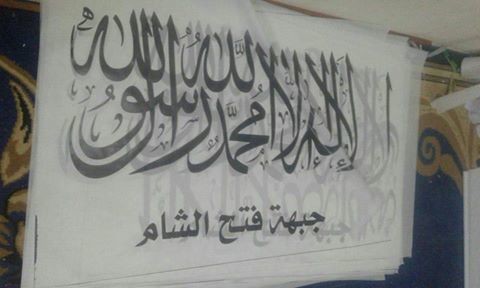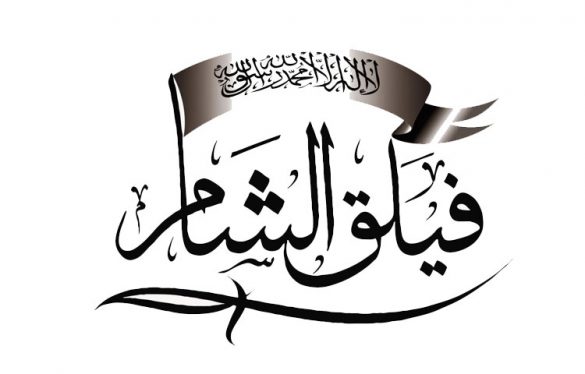Washington Kurdish Institute
By: Yousif Ismael Sept 7, 2016
The bloody proxy war continues in Syria, a war that originated from a popular revolt against the Syrian dictator Bashar al-Assad. The latest development in this bloody conflict is the recent Turkish intervention in Jarablus. The Turkish invasion of Syria, in addition to Turkey’s support for extremist and jihadist groups, will have broad negative implications for Syria, exacerbating an already violent situation which shows no sign of calming anytime soon.
Some of the jihadist and extremist groups who Turkey support include, but are not limited to, Faylaq al-Sham (the Levant Legion), the Nour al-Din al-Zenki Brigade, the Sultan Murad Brigade, and Jaysh Tahrir al-Sham (the Liberation Army of the Levant).
Faylaq al-Sham (the Levant Legion): A jihadist faction based on the Muslim Brotherhood’s (MB) ideology, the group recently officially announced its break from MB. However, according to some reports, the group mainly undertook this break in order to obtain support from Saudi Arabia, who are opposed to the MB and its ideology. A day after the invasion of Jarablus, the group’s commander declared war on the U.S.-backed Syrian Democratic Forces (SDF). The commander stated that they aim to move toward Manbij and liberate it from the “SDF occupiers.” The very next day after making these statements, Faylaq al-Sham captured four SDF fighters, tortured them (video here), and brutally killed one of them.
Nour al-Din al-Zenki Brigade: An extremist group and former faction of Jaysh al-Mujahideen (the Army of Mujahideen) that is active in Aleppo. Like Faylaq Al Sham, Nour al-Din al-Zenki subscribed to the jihadist ideology of the MB. In July 2016, the group gained international notoriety when some of its members beheaded a 14-year-old Palestinian boy who was captured by the group as a prisoner of war while fighting for a pro-Assad militia. The beheading was roundly condemned by various human rights groups and international observers. Despite the fact that such a mentality demonstrated by this beheading is no different from that of ISIS, this group also continues to be supported by Turkey. The group is named after a Turkish sultan of the Zengid dynasty’s Islamic caliphate who was well-known for his battles against European crusaders.
Sultan Murad Division: A faction within the an Islamic and nationalistic orientation, this Turkmen group is named after an Ottoman sultan and strongly supported by the Turkish government. Unlike the other groups on this list, the Sultan Murad Division has no Syria-specific agenda of its own outside of the agenda of its Turkish-backers. Its creation in 2013 by Turkey heavily mirrors the 1995 formation of the Iraqi Turkmen Front (ITF) in Iraq. Both groups comprise native Turkmens being utilized by the Turkish government to enact a predominately, if not exclusively, pro-Turkish-government agenda, the Sultan Murad Division and ITF share more than their respective origins in common. The Sultan Murad Division’s expressed ideology often switches between Islamism and nationalism. For example, the group acted more openly Islamist when they were fighting alongside al-Qaeda affiliate Jahbat al-Nusra in Aleppo. The group’s main goal in Syria is to stand in the way of Kurdish rights, self determination, and empowerment, a goal that the ITF failed to achieve in Iraq.
Jaysh Tahrir al-Sham: An Islamic faction that was formed from five different groups in February of 2016, this group reached an agreement with the Syrian al-Qaeda affiliate Jabhat al-Nusra. Before this agreement, the two groups were engaged in ongoing fighting with one another. One of the points of the agreement states that “the group [Jaysh Tahrir al-Sham] should not participate in any activity that hurts Mujahideen,” in another words, Jaysh Tahrir al-Sham will not fight al-Qaeda/Jabhat al-Nusra in Syria.
There are many other jihadist groups that are backed by Turkey, including Ahrar al-Sham and Jaysh al-Fatah. Most of the jihadist groups that participated in the Jarablus operation are based in Aleppo. These groups are also involved in the ongoing bombarding of the mixed Kurdish/Arab neighborhood of Sheikh Maqsoud with “hell cannons,” homemade howitzer-type cannons, an campaign of aggression which has resulted in death of numerous Kurdish and Arab civilians. Additionally, a recent Amnesty International report shows that these groups have used chemical weapons against civilians. Ironically, the U.S. and Turkey often refer to these groups as “moderate rebels.”
The philosophy surrounding violent jihad within their shared MB ideology is the main common interest among not only these Syrian rebel groups but also between these groups and Turkey’s Justice and Development Party (AKP), Turkey’s ruling political party. Moreover, this jihadist ideology also has common ground with the current domestic and foreign policy of increasingly aggressive Turkish President Recep Tayyip Erdogan, who has not hidden his regional ambitions.
The main focus of these groups is to establish in Syria a Sunni version of the Iranian Islamic theocracy. The prospect of establishing such a system is welcomed by both Turkey and Saudi Arabia. However, these two regional powers will never agree upon what shape or formation should be taken by an Islamic theocracy in Syria, as the two countries subscribe to competing schools of thought with respect to the philosophy of building an Islamic state – Turkey with its MB ideology and Saudi Arabia with its Salafist ideology, and thus will inevitably clash since the differences in ideology are tremendous. Sooner or later, Turkish-backed groups and Saudi-backed groups will fight against each other. This prediction is supported by the fact that these factions have already battled against each other on a somewhat smaller scale in Syria.
In sharp contrast to these aforementioned groups and their Islamist ideology stands the Syrian Democratic Forces (SDF). The SDF was formed in October of 2015 after the successes of the People’s Defense Units (YPG) against ISIS in Kobani and Tel Abyad. Not only did the SDF gain large scale support from Syria’s Kurdish population, but the group was also able to attract many of Syria’s secular Arabs and Turkmens in addition to a large number of Christians. The SDF, with direct air support from the U.S.-led coalition, has liberated large swaths of land from the control of ISIS. Unlike the Syrian rebel groups discussed above, the SDF believes in secularism and the separation of religion and state. As stated clearly in the Declaration of Federalism in Rojava and Northern Syria, the SDF and its supporters believe in the self-management of local towns and neighborhoods, as opposed to the narrow views of classical nationalism. This progressive view of federalism also led the Syria Democratic Council (SDC) to draft a modern, secular constitution that includes provisions protecting gender equality, ethnic and religious rights, diversity, political and economic rights, among numerous other values many hold dear in the West.
The SDF paid a large price during its liberation of ISIS-controlled territory. 5,000 members of the SDF have been killed since the fall of 2015. During the latest operation to liberate Manbij, the SDF lost about 250 fighters in more than two months of intense fighting against ISIS.
The areas that are controlled by the SDF have hosted more than a million internally displaced people. At a time when Islamist rebel groups were bombarding Sheikh Maqsoud, the Afrin Canton even hosted the families of these very rebel groups when they fled pro-Assad militias.
In contrast to SDF’s administration of liberated territory, the experience for civilians living in territory liberated by these “moderate rebel” groups has not been pleasant. When Idlib city was wrested from the control of the dictatorship of Assad, internal battles broke out among the rebel groups occupying the area. Moreover, these groups in Idlib failed to establish any coherent, effective plan of governing beyond the implementation of Shari’a law. The fact that these groups retain strong ties with regional Islamic powers has reduced the incentive for them to construct any independent, meaningful long-term vision for the country’s future.
The U.S. role in supporting the SDF is vital in the fight against ISIS, especially after the United States’ training program for the “moderate rebels” proved to be a costly failure. However, the Kurds and the supporters of federalism in Rojava and Northern Syria feel betrayed by the U.S.-led coalition for supporting Turkey in its recent invasion of Syria and for its backing of jihadist groups. Indeed these recent actions arouse memories of the bitter days of 1975 (when the Ford Administration and the pre-Islamic revolution Iranian regime abandoned their Kurdish allies to the whims of the Iraqi Ba’athist regime) and 1991 (when the U.S.-led coalition encouraged and subsequently failed to support a popular uprising of Kurds and other Iraqis against the regime of Saddam Hussein, resulting in massacres across the country). Following these betrayals, however, the Kurds of Iraq were very appreciative of the “No Fly Zone” that the U.S.-led coalition established after 1991 and the recent support given to the YPG and Iraqi Kurdish Peshmerga forces in their respective conflicts in Syria and Iraq.
Despite the fragile truce between the SDF and Turkish-backed Jihadi groups, Turkey’s military invasion of Syria will have negative results for all, including the people of Turkey. The Turkish army, following the recent post-coup-attempt purge, will get bogged down in another endless war, this time in Syria, especially since the SDF will not hesitate to resist Turkish interference and occupation.
Turkey’s strategy of supporting jihadist groups in northern Syria is clearly undertaken as a means to destabilize the most stable region in the country following its liberation from ISIS and Assad. Russia significantly benefits from this chaos, since Russia will now be considered the most dependable alternative as a partner for all sides.
Whether in Iraq or Syria, the most welcome and secure areas for the U.S. are in Kurdish-controlled territory. Since the U.S. administration betrayed the SDF by allowing Turkey to support jihadist groups now attacking SDF-controlled territories, the image of the U.S. has deteriorated in the eyes of the Kurdish people. This is a most worrying development, as losing the Kurds as friends in today’s Middle East will complicate the American role even further, as the U.S. nonetheless seems singularly focused on degrading and destroying ISIS.
Now as some observers have argued, it is possible for the U.S. to work with Turkey in a way that does not alienate or betray Syria’s Kurds. Yet at a fundamental level, this current U.S. administration, as well as future administrations, has two options in Syria: (1) to support the SDF, who have proved to be a valuable ally and the most effective fighters against ISIS, and its establishment of secular federalism in the region, or (2) to repeat Afghanistan’s scenario and support extremist groups who make no secret of their ambition to create an Islamist, antidemocratic system in Syria similar to the governments of Iran and Saudi Arabia. The U.S. cannot choose both options, for doing so will only prolong the Syrian civil war even more, perpetuating both the existence of the dictator Assad as well as the equally abhorrent presence of jihadist groups including, but not limited to, ISIS and Al Qaeda.
Flags of varies groups in Syria.
Syrian Democratic Forces flag.
Disclaimer: The views, opinions, and positions expressed by authors and contributes do not necessary reflect those on the WKI.







